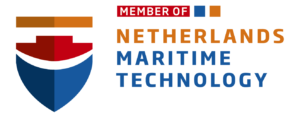Embrace: The Future of Silent, Efficient Superyacht Propulsion
The superyacht sector is undergoing a shift characterized by rapid technological innovation, with sustainability as a central tenet. This shift encompasses the adoption of hybrid and electric propulsion technologies resulting in the implementation of advanced energy management strategies. In response to these emerging trends, we developed Embrace—our state-of-the-art solution addressing the increasing demand for electrified propulsion systems.
Embrace is designed for seamless integration with our propeller shaft installations, merging operational efficiency with sustainable innovation. This system ensures an acoustically optimized, comfortable on board experience by significantly mitigating noise levels compared to conventional propulsion mechanisms.
What is Embrace?
Embrace is an electrified propulsion system available in both water- and oil-lubricated configurations, offering adaptability to diverse vessel requirements. It is developed in collaboration with leading specialists in electric motor technology.
The core of the Embrace system is a high-performance permanent magnet motor, semi-integrated within the propeller shaft installation. The name Embrace symbolizes the way the electric motor seamlessly integrates with our existing propeller shaft installations, thereby enhancing overall propulsion efficiency and system performance.
The motor’s high torque output eliminates the need for gear reduction, resulting in lower noise levels and reduced structure-borne noise, which is crucial for the superyacht industry.
What Makes Embrace Stand Out?
The Embrace propulsion system offers several distinguishing features:
- Compact & Efficient Design: Engineered to save space while delivering powerful performance. Embrace reduces the required engine room space, optimizing on board space without compromising power.
- Semi-Integrated Motor: The bearingless motor design reduces mechanical wear, thereby minimizing maintenance demands and enhancing overall system reliability.
- Simplified Maintenance: Easy access to the propeller shaft installation streamlines servicing, ensuring long-term reliability. This allows for quicker inspections and repairs, reducing downtime and increasing the lifespan of the entire propulsion system.
- Direct Drive System: Eliminates the need for flexible couplings, improving both performance and durability. With fewer components involved, the direct drive design ensures higher efficiency and a significant reduction in mechanical noise, enhancing on board comfort
- Universal Application: Fully compatible with all Rubber Design propeller shaft installations, including both water- and oil-lubricated systems. Embrace is ideal for luxury superyachts, expedition vessels, and other high-performance crafts, making it suitable for new builds and retrofits alike.
These features collectively position Embrace as the leading solution for superyacht propulsion, combining cutting-edge innovation with operational benefits for yacht owners and operators. Embrace not only meets but sets new benchmarks in propulsion efficiency, acoustic performance, and sustainability.
The Core Benefits of Rubber Design
At Rubber Design, we provide complete propeller shaft installation systems, precisely tailored to meet the unique specifications of each vessel. Our systems are designed to enhance performance, durability, and longevity by ensuring seamless integration between the propeller shaft, engine, and auxiliary equipment.
Whether you are undertaking a new build or retrofitting an existing vessel, Rubber Design stands as your reliable partner for propulsion solutions. From initial conceptualization through to final implementation, Rubber Design is committed to offering expertise, support, and cutting-edge solutions. With Embrace, we are pioneering the path towards a sustainable, efficient future for the superyacht industry, setting new standards in propulsion technology and on board comfort.





